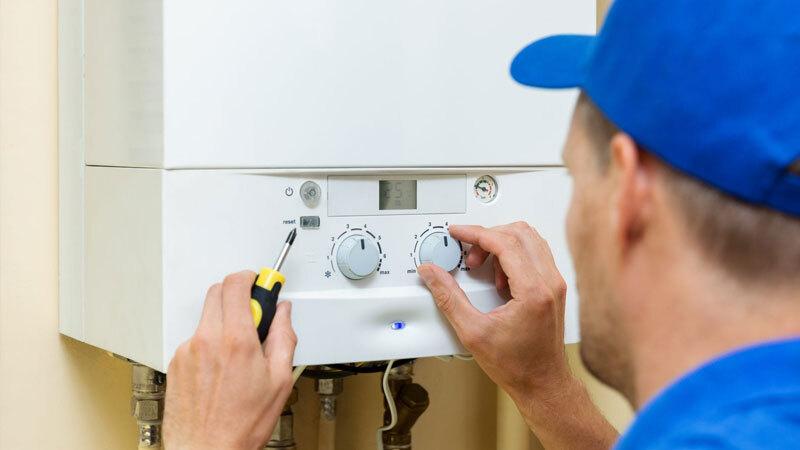When it comes to the modern comforts of home, having a functioning water heater is an essential component. A reliable source of hot water is crucial for daily activities like bathing, cleaning, and cooking. However, like any other appliance, water heaters can occasionally malfunction, leaving you in need of emergency water heater repair. In this comprehensive guide, we will explore the various aspects of emergency water heater repair to help you understand what to expect and how to address this situation efficiently.
Chapter 1: Signs of a Water Heater Emergency
Before delving into emergency water heater repair, it’s essential to recognize the signs that your water heater may be experiencing issues. Identifying these signs early can help you address problems before they become emergencies. Some common indicators include:
1.1. Insufficient Hot Water: If you suddenly have less hot water than usual or it runs out quickly, this could be a sign of a problem.
1.2. Strange Noises: Unusual noises, such as rumbling or popping, coming from your water heater may indicate sediment buildup or other issues.
1.3. Leaks or Pooling Water: Water pooling around the base of your water heater or visible leaks are clear signs of a problem.
1.4. Rusty Water: Brown or rusty-colored water when you turn on the hot tap could be a sign of corrosion inside the tank.
1.5. Pilot Light Issues: For gas water heaters, a constantly extinguishing pilot light or difficulty in relighting it can be problematic.
Chapter 2: Safety Precautions
Before attempting any emergency water heater repair, your safety should be the top priority. This chapter covers important safety precautions to follow when dealing with a malfunctioning water heater. Safety measures include:
2.1. Turn Off Power and Gas: Before inspecting or repairing the water heater, it’s crucial to turn off the power supply and gas line to avoid potential hazards.
2.2. Ventilation: Adequate ventilation in the area of your water heater is vital to prevent gas buildup and potential combustion hazards.
2.3. Protective Gear: Using appropriate safety gear, such as gloves and eye protection, can help protect you from burns and other injuries.
Chapter 3: Common Water Heater Issues and Solutions
This chapter explores various common water heater problems and offers step-by-step solutions to address them. Some of the issues covered include:
3.1. Sediment Buildup: Sediment can accumulate at the bottom of the tank, reducing heating efficiency. Learn how to flush your water heater to remove sediment.
3.2. Leaking Water: Different reasons can cause water heater leaks. We discuss how to identify the source of the leak and possible fixes.
3.3. No Hot Water: If your water heater isn’t producing hot water, we outline troubleshooting steps to determine the cause and potential solutions.
3.4. Pilot Light Problems: For gas water heaters, we explain how to troubleshoot and relight a pilot light that keeps going out.
Chapter 4: Emergency Water Heater Repair vs. Professional Help
In this chapter, we discuss the line between DIY repairs and the need for professional assistance. Not all water heater issues can be safely or effectively addressed by homeowners. Topics covered include:
4.1. When to Call a Professional: We provide guidelines for recognizing situations where professional help is necessary, ensuring your safety and the longevity of your water heater.
4.2. Hiring a Qualified Technician: If you decide to hire a professional, we offer advice on selecting a qualified technician or service provider.
4.3. Cost Considerations: Understanding the potential costs of emergency water heater repair helps you make informed decisions about repair versus replacement.
Chapter 5: Preventative Maintenance
Prevention is often the best approach to avoiding emergency water heater repair. In this chapter, we discuss routine maintenance practices to extend the life of your water heater, including:
5.1. Flushing the Tank: Regularly flushing the tank to remove sediment and mineral buildup can maintain efficiency and prevent issues.
5.2. Anode Rod Replacement: We explain the importance of the anode rod and how to replace it to prevent tank corrosion.
5.3. Insulation and Temperature Settings: Optimizing your water heater’s insulation and temperature settings can reduce energy consumption and extend the appliance’s lifespan.
Chapter 6: Water Heater Replacement
In some cases, emergency water heater repair may not be the most cost-effective or safe solution. This chapter covers the factors to consider when replacing your water heater, including:
6.1. Types of Water Heaters: We provide an overview of different types of water heaters, such as tankless, tank-type, and heat pump, to help you choose the most suitable replacement.
6.2. Energy Efficiency: Considerations for selecting an energy-efficient water heater to save on utility bills and reduce your carbon footprint.
6.3. Installation Process: What to expect during the installation of a new water heater, including potential costs and timeframes.
Chapter 7: Conclusion
In the final chapter, we recap the essential points covered in this guide on emergency water heater repair. We emphasize the importance of regular maintenance and safety, helping homeowners make informed decisions about their water heater’s care and maintenance.
Emergency water heater repair is a crucial skill for homeowners to have in their arsenal, but it’s equally important to recognize when professional help is needed. By understanding the signs of water heater issues, taking safety precautions, and practicing preventative maintenance, you can ensure a reliable supply of hot water in your home. When it comes to your comfort and convenience, being prepared and informed is key.



